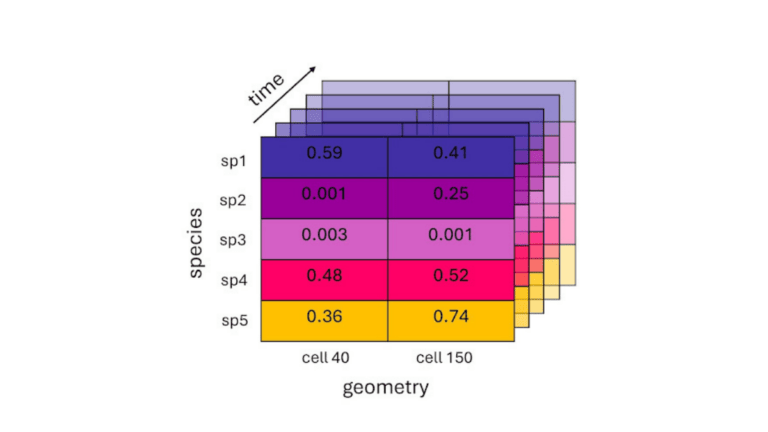Result description
The outcome is a stars object integrating three dimensions: time, space (as grid cells) and species, with suitability as the main attribute (https://github.com/b-cubed-eu/virtual-suitability-cube). It provides a simple, scalable and replicable foundation for complex ecological studies, enabling flexible exploration through slicing, aggregation, and advanced analyses.
By leveraging virtual species, we demonstrate how to construct a suitability data cube using climate data. This allows for direct comparisons of species trends and serves as a powerful tool for monitoring ecological dynamics.
The true strength of this approach lies in its adaptability. While the initial cube focuses on suitability, the same framework can be extended to incorporate ecological attributes, such as habitat connectivity, species interactions or environmental pressures. The data cube facilitates long-term monitoring, making it useful for assessing biodiversity changes, conservation planning, and scenario-based forecasting under future climate conditions.
Addressing target audiences and expressing needs
- Collaboration
We are working on translating the Virtual Suitability Cube (https://github.com/b-cubed-eu/virtual-suitability-cube) to real species, using actual data that are often affected by sampling bias. A key focus of our work is quantifying sampling bias to integrate corrective measures into suitability maps. By addressing these biases, we aim to improve the reliability of species distribution predictions and ensure that the data cube remains a robust tool for ecological analysis and long-term monitoring.
- Academia/ Universities
R&D, Technology and Innovation aspects
We are working on translating the Virtual Suitability Cube (https://github.com/b-cubed-eu/virtual-suitability-cube) to real species, using actual data that are often affected by sampling bias. A key focus of our work is quantifying sampling bias to integrate corrective measures into suitability maps. By addressing these biases, we aim to improve the reliability of species distribution predictions and ensure that the data cube remains a robust tool for ecological analysis and long-term monitoring.

